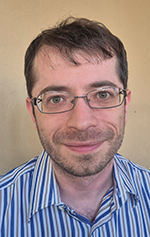

I always knew I had to register as a professional engineer. South African law is clear, with the Engineering Council of South Africa (ECSA) overseeing this. Certain work must be approved by a professional engineer in that discipline. Earlier in my career, someone once told me, “The Engineering Council isn’t there to protect you from the public; it’s there to protect the public from you.” The line sounded absurd − I’m a decent person who does good work, so why would anyone need explicit protection from me?
Then I opened the registration guidelines. The warning wasn’t condemning engineers; it reminds us that good intentions and technical skill aren’t sufficient. To safeguard the public we must mitigate risk, act ethically, manage projects and people, and keep our knowledge current. Years of racking up technical hours suddenly felt incomplete. Professionalism is judged not by how busy you are, but by how reliably you work, grow, manage and serve others.
What counts
ECSA assesses candidates against eleven outcomes separated into five groups:
Group A: Engineering problem solving
Group B: Managing engineering activities
Group C: Risk and impact mitigation
Group D: Act ethically, exercise judgment, take responsibility
Group E: Professional development
Each outcome must be demonstrated during complex engineering work. Complex disqualifies, but does not dismiss, the importance of routine tasks; documentation, maintenance checks and cost estimates build the instincts you will need when the stakes are high. Ultimately, ECSA wants proof that you can, and will, carry responsibility when faced with uncertainty, conflicting constraints and not just apply any “ready-made solution” to an engineering problem.
The paper trail
Beyond the application forms you must additionally submit two core documents:
• Training and experience report: A wide-angle view of processes, industries, technologies, roles, responsibilities and dates. Essentially, a technical CV.
• Engineering report: A close-up on a few projects that discusses design choices, risk mitigation, ethical stances and outcomes in enough detail for a reviewer to be able to follow your reasoning and competency.
Gatekeepers and guides
Referee reports from professional engineers who know your work first hand are mandatory and must be submitted confidentially to ECSA. Independent moderators review each submission before it reaches the interview panel. Because referees can vouch only for what they have witnessed, involve them early. A mentor, though technically optional, is invaluable for decoding outcomes and steering you toward responsibilities; such mentors can become the strongest referees, having continuously monitored your progress during your career.
The review room
One of the final hurdles of the application is a professional review. A panel of professional engineers from your discipline puts your paperwork to the test. You begin with a timed slide deck, fifteen minutes or so, concisely presenting milestones and Engineering Report projects discussing your competency against each required outcome. With the presentation completed, questioning subsequently begins. Anything thin, ambiguous or overly polished is fair game. Come prepared to answer difficult questions.
Collecting proof
Compiling my application became the toughest project I improperly planned for. Engineering is a team sport, yet registration demands individual accountability. With no evidence tagged in real time, I had to pull my contributions from the anonymous ‘we’ from years of project folders. Evenings were dedicated to locating documents initialled by me, risk logs with my advice, and emails where I vetoed unsafe shortcuts. I revived old code, chased colleagues for signatures, and tackled directories ambitiously labelled ‘final_v3_reallyfinal’. Each item needed a level of responsibility: what I decided, why I chose, and how I owned the consequence. Only after stitching these threads together did the submission satisfy every outcome ECSA expects from the application.
Lessons in hindsight
Registration is not a single heroic leap; it is a set of well-documented steps taken over years. Here are several things I would recommend:
• Keep the eleven outcomes visible and review progress quarterly.
• Save evidence immediately; a dated document beats reconstructing events from memory later.
• Work with a committed mentor who can spot gaps in your progress and guide you to success.
• Update or involve potential referees at key milestones so their reports may cite firsthand insight.
• Start drafting reports early. Early versions expose the gaps you still have time to close.
Beyond the stamp
When my approval email arrived, relief washed over me, but my job didn’t suddenly change. What did change was the weight of my signature, a signal to clients and peers that my work and judgment are reliable, and my ethics unwavering. Successful registration isn’t a crown that signals you’re now the smartest engineer; it’s a pledge to society to uphold public trust through continuous learning, staying current with standards and mentoring the next generation. This ongoing commitment, in my experience, transforms how you approach every project, fostering deeper accountability.
For aspiring professionals, the journey may seem daunting, but every step builds you into a trusted professional. Start today: download ECSA’s guidelines, document your work and connect with a mentor who’s been through it. The path is challenging, but it will shape you into an engineer who builds a safer, more efficient and better future for us all.
For more information contact Damian de Arruda Pr.Eng., Afrilek,
| Tel: | +27 11 312 2445 |
| Email: | [email protected] |
| www: | www.saimc.co.za |
| Articles: | More information and articles about SAIMC |

© Technews Publishing (Pty) Ltd | All Rights Reserved